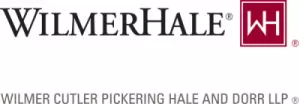- within Intellectual Property topic(s)
- within Environment topic(s)
In its recent decision in Ingenico Inc. v. IOENGINE, LLC, the Federal Circuit affirmed the district court's decision to allow Ingenico to introduce certain prior art at trial, finding that inter partes review (IPR) estoppel did not preclude the prior art on which Ingenico relied. Ingenico Inc. et al. v. IOENGINE, LLC, No. 23-1367, slip op. (Fed. Cir. May 7, 2025) (Ingenico). This is an important decision that provides guidance on the scope of estoppel and addresses questions that have split district courts, including as to the scope of estoppel related to product or system prior art.
Case Background and Lower Court Decision
IOENGINE originally filed an action in the District of Delaware alleging that PayPal's products infringed certain patents. IOENGINE, LLC v. PayPal Holdings, Inc., No. 18-452-WCB (D. Del.). Ingenico, as the supplier of PayPal's accused products, then filed a declaratory judgment action against IOENGINE. Ingenico Inc. v. IOENGINE LLC, No. 18-826-WCB (D. Del.). Before trial, Ingenico filed IPR petitions challenging IOENGINE's asserted patents, resulting in final written decisions holding that most of the claims of two IOENGINE patents were unpatentable. Ingenico Inc. v. IOENGINE, LLC, IPR2019-00879 (PTAB Mar. 25, 2019); Ingenico Inc. v. IOENGINE, LLC, IPR2019-00929 (PTAB Apr. 4, 2019).
At summary judgment, IOENGINE moved to preclude Ingenico from relying on "documentation related to DiskOnKey Upgrade software" under 35 U.S.C. § 315(e)(2) as prior art that Ingenico reasonably could have raised during the IPR proceedings. Ingenico, 3. The district court ruled that "Ingenico will be estopped from relying on those documents [to prove invalidity] except to the extent . . . that they form part of a substantively different combination of references that could not reasonably have been raised in the IPRs." Id.
At trial, Ingenico presented invalidity arguments relying on a product prior art USB device known as DiskOnKey, which was offered with software including a Firmware Upgrader and had capabilities described in a Software Development Kit. Id. In particular, Ingenico argued that the DiskOnKey USB device anticipated or rendered obvious the asserted claims because the device was either "on sale" or "in public use" under 35 U.S.C. § 102(b) (pre-AIA) or "known or used by others . . . before the date of the invention" under 35 U.S.C. § 102(a) (pre-AIA). Id. The jury returned a verdict that the claims were invalid as anticipated and obvious. Id.
The Parties' Appeal and Federal Circuit Decision
On appeal, IOENGINE argued that IPR estoppel should have precluded Ingenico from introducing the Firmware Upgrader at trial. Id. at 4. IOENGINE asserted that Ingenico should have been barred from relying on the Firmware Upgrader because it was cumulative and substantively identical to certain printed publications that could have been raised during the IPR. Id. at 11.
The Federal Circuit found that IPR estoppel did not apply, and interpreted, for the first time, the meaning of the term "ground" as used in 35 U.S.C. § 315(e)(2). Id. at 11–12. The court determined that "[g]rounds are the theories of invalidity available to challenge a claim under §§ 102 and 103." Id. The court explained that the IPR statute limits "an IPR's scope to invalidity challenges based on 'prior art consisting of patents or printed publications,'" and that "Congress intentionally limited an IPR's scope" to exclude validity challenges "on other grounds (e.g., public uses or sales)" as a way "to create a streamlined administrative proceeding." Id. at 12–13 (quoting Qualcomm Inc. v. Apple Inc., 24 F.4th 1367, 1376 (Fed. Cir. 2022); Lynk Labs, Inc. v. Samsung Elecs. Co., 125 F.4th 1120, 1128 (Fed. Cir. 2025)). Thus, an IPR "petitioner has no opportunity to challenge that the claimed invention was known or used by others, on sale, or in public use at IPR," which are "grounds that could normally be raised under §§ 102 or 103, but Congress excluded in IPR proceedings." Id. at 12–13.
The court distinguished between a ground and the prior art relied on in an IPR. Id. at 14. The court explained that "IPR estoppel does not preclude a petitioner from asserting the same prior art raised in an IPR in district court, but rather precludes a petitioner from asserting grounds that were raised or reasonably could have been raised during an IPR." Id. (emphasis added). Because "[t]he only anticipation and obviousness challenges that a petitioner can make during an IPR are that the claims were patented or described in a printed publication[,] IPR estoppel precludes these challenges in the district court if they were raised or reasonably could have been raised during the IPR." Id. The court determined, however, that "IPR estoppel does not preclude a petitioner from relying on the same patents and printed publications as evidence in asserting a ground that could not be raised during the IPR, such as that the claimed invention was known or used by others, on sale, or in public use." Id.
The Federal Circuit explained that this "interpretation of ground is consistent with how" the court has "previously interpreted 35 U.S.C. § 311(b)." Id. In particular, the court referenced its recent decision in Qualcomm Inc. v. Apple Inc. (Qualcomm II), in which the court "held that 'because the basis [of an IPR ground] can only include prior art consisting of patents or printed publications, and because AAPA [applicant admitted prior art]1 is not a prior art patent or printed publication . . . , it follows that the plain meaning of § 311(b) does not permit the basis to include AAPA." Id. at 15 (quoting No. 23-1208, 2025 WL 1174161, at *7 (Fed. Cir. Apr. 23, 2025)). The court explained that "[i]f prior art that is not a patent or printed publication, such as AAPA, was used in combination with patents or printed publications such that the 'basis' of the ground included AAPA, the petitioner would no longer be asserting a ground that the claimed invention was patented or described in a printed publication." Id.
Therefore, the court held that "IPR estoppel applies only to a petitioner's assertions in district court that the claimed invention is invalid under 35 U.S.C. §§ 102 or 103 because it was patented or described in a printed publication (or would have been obvious only on the basis of prior art patents or printed publications)." Id. at 15–16. A petitioner cannot be estopped, however, "from asserting that a claimed invention was known or used by others, on sale, or in public use in district court," because "[t]hese are different grounds that could not be raised during an IPR." Id. at 16.
Conclusion
The Federal Circuit's decision in Ingenico provides guidance regarding the scope of IPR estoppel, as well as the interplay between estoppel and various types of prior art, including system art and AAPA. Under the Federal Circuit's decision, when a defendant's district court or International Trade Commission invalidity ground is based in whole or in part on system art, AAPA, or an invalidity theory that could not be presented as a ground in an IPR, the defendant could argue that IPR estoppel should not attach to preclude the defendant from relying on that invalidity ground at trial.
The Federal Circuit's full opinion is available at https://www.cafc.uscourts.gov/opinions-orders/23-1367.OPINION.5-7-2025_2510618.pdf.
Footnote
1. Applicant admitted prior art typically includes a patentee's own statements in the body of the patent, admitting what was known before the patent application was filed.
The content of this article is intended to provide a general guide to the subject matter. Specialist advice should be sought about your specific circumstances.







